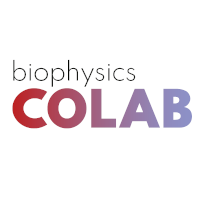Calcineurin-fusion facilitates Cryo-EM Structure Determination of a Family A GPCR
This article has been Reviewed by the following groups
Listed in
- Reviewed articles (Biophysics Colab)
Abstract
Advances in singe-particle cryo-electron microscopy (cryo-EM) have made possible to solve the structures of numerous Family A and Family B G protein coupled receptors (GPCRs) in complex with G proteins and arrestins, as well as several Family C GPCRs. Determination of these structures has been facilitated by the presence of large extra-membrane components (such as G protein, arrestin, or Venus flytrap domains) in these complexes that aid in particle alignment during processing of the cryo-EM data. In contrast, determination of the inactive state structure of Family A GPCRs is more challenging due to the relatively small size of the seven transmembrane domain (7TM) and to the surrounding detergent micelle that, in the absence of other features, make particle alignment impossible. Here we describe an alternative protein engineering strategy where the heterodimeric protein calcineurin is fused to a GPCR by three points of attachment, the cytoplasmic ends of TM5, TM6 and TM7. This three-point attachment provides a more rigid link with the GPCR transmembrane domain that facilitates particle alignment during data processing, allowing us to determine the structures of the β 2 adrenergic receptor (β 2 AR) in the apo, antagonist-bound, and agonist-bound states. We expect that this fusion strategy may have broad application in cryo-EM structural determination of other Family A GPCRs.
Article activity feed
-

Consolidated peer review report (2 June 2022)
GENERAL ASSESSMENT
Xu et al. report a new protein engineering strategy to obtain cryo-EM structures of group-A GPCRs in non-G protein-bound forms (apo, agonist or antagonist bound). Class-A GPCRs are 7 transmembrane helical proteins that are completely membrane-embedded with no prominent structural features outside the membrane limits. This topology makes particle alignment extremely difficult in the cryo-EM data processing workflow. Therefore, cryo-EM structures of GPCRs have typically been determined by coupling the receptors to G proteins or arrestins. However, this approach limits the information obtained about different functional states, particularly the inactive state.
To address this fundamental issue, the authors attach calcineurin, a heterodimeric protein composed of CN-A and CN-B …
Consolidated peer review report (2 June 2022)
GENERAL ASSESSMENT
Xu et al. report a new protein engineering strategy to obtain cryo-EM structures of group-A GPCRs in non-G protein-bound forms (apo, agonist or antagonist bound). Class-A GPCRs are 7 transmembrane helical proteins that are completely membrane-embedded with no prominent structural features outside the membrane limits. This topology makes particle alignment extremely difficult in the cryo-EM data processing workflow. Therefore, cryo-EM structures of GPCRs have typically been determined by coupling the receptors to G proteins or arrestins. However, this approach limits the information obtained about different functional states, particularly the inactive state.
To address this fundamental issue, the authors attach calcineurin, a heterodimeric protein composed of CN-A and CN-B subunits, to the β2 adrenergic receptor (β2AR) protein. The attachment is made through a three-point fusion to the cytoplasmic ends of TM5, TM6, and TM7, providing a rigid anchor to the coupled protein. They show that this strategy can be used as a potential tool (as a rigid fiducial marker) for aiding particle alignment of small GPCR proteins. To obtain a resolution of 3.5 Å, they shorten the linkers and use an additional protein binder (FKBP12) and a compound (Tacrolimus).
As a summary, this work brings novel strategies to determine cryo-EM structures of GPCRs in inactive states and bound to pharmacologically relevant antagonists and/or partial agonists (or any other agonists) that cannot be stabilized with a Gabg heterotrimer. These strategies could be extended to the less understood orphan receptors, where at times an agonist is not available, and to structural studies on negative allosteric modulators or novel types of antagonistic modulators. Together with the pre-existing nanobodies and scFvs available for GPCRs, there are exciting times ahead where innovative ways of using these tools can lead to novel insights into GPCR functionality and therapeutic modulation. Beyond GPCRs, the approach to fuse a heterodimeric protein to the protein of interest to increase the mass as well as resolve particle alignment issues could be adapted for structure determination of small, symmetrical membrane proteins.
RECOMMENDATIONS
Revisions essential for endorsement:
There are two additional strategies that have been proposed to achieve a similar goal (the use of a universal nanobody binding intracellular loop 3 (ICL3) and fusion of a rigid BRIL to TM5-6). The universal nanobody strategy has led to structures of small membrane proteins and to inactive states of GPCRs at good resolution (ranging from 2.4 - 3.1 Å). It would be helpful if the authors were to discuss this issue in light of other protein engineering methods and provide some directions to further optimize the CN-fusion method to obtain higher resolutions.Some limitations of the new strategy arise from the need to optimize for each receptor, although it seems that any engineering would be restricted to finding suitable length linkers. However, it was not clear to the reviewers whether calcineurin interacts with the cytoplasmic end of the receptor. The authors compare the helical folding of ICL2 in cryo-EM structures with X-ray crystallographic structures, however, it is unclear from the figures whether ICL2 interacts with calcineurin. Additionally, it seems the receptors fused to calcineurin are stabilized in an inactive state, as a slightly detrimental effect on agonist affinity is seen. Although the authors suggest this might be due to the short linkers, this could also be due to the interaction of calcineurin with the intracellular side (if it does interact). It would be good to clarify this in the revision.
Additional suggestions for the authors to consider:
The distance between TM5 and TM6 of β2AR is 11 Å. Do the authors think this distance has facilitated the incorporation of calcineurin into β2AR? Could this be a problem for small membrane proteins in which fusing a heterodimeric protein to the loop region might introduce steric clashes?The authors should mention the BRIL strategy used to obtain structures of GPCRs without coupling to G proteins (Zhang, bioRxiv, 2021).
REVIEWING TEAM
Reviewed by:
Sayan Chakraborty, Postdoctoral Associate, Weill Cornell Medicine, USA: membrane protein biochemistry, X-ray crystallography
Javier Garcia-Nafria, Researcher, University of Zaragoza, Spain: cryo-electron microscopy, G protein-coupled receptors
Curated by:
Sudha Chakrapani, Professor, Case Western Reserve University, USA
(This consolidated report is a result of peer review conducted by Biophysics Colab on version 1 of this preprint. Minor corrections and presentational issues have been omitted for brevity.)
-

